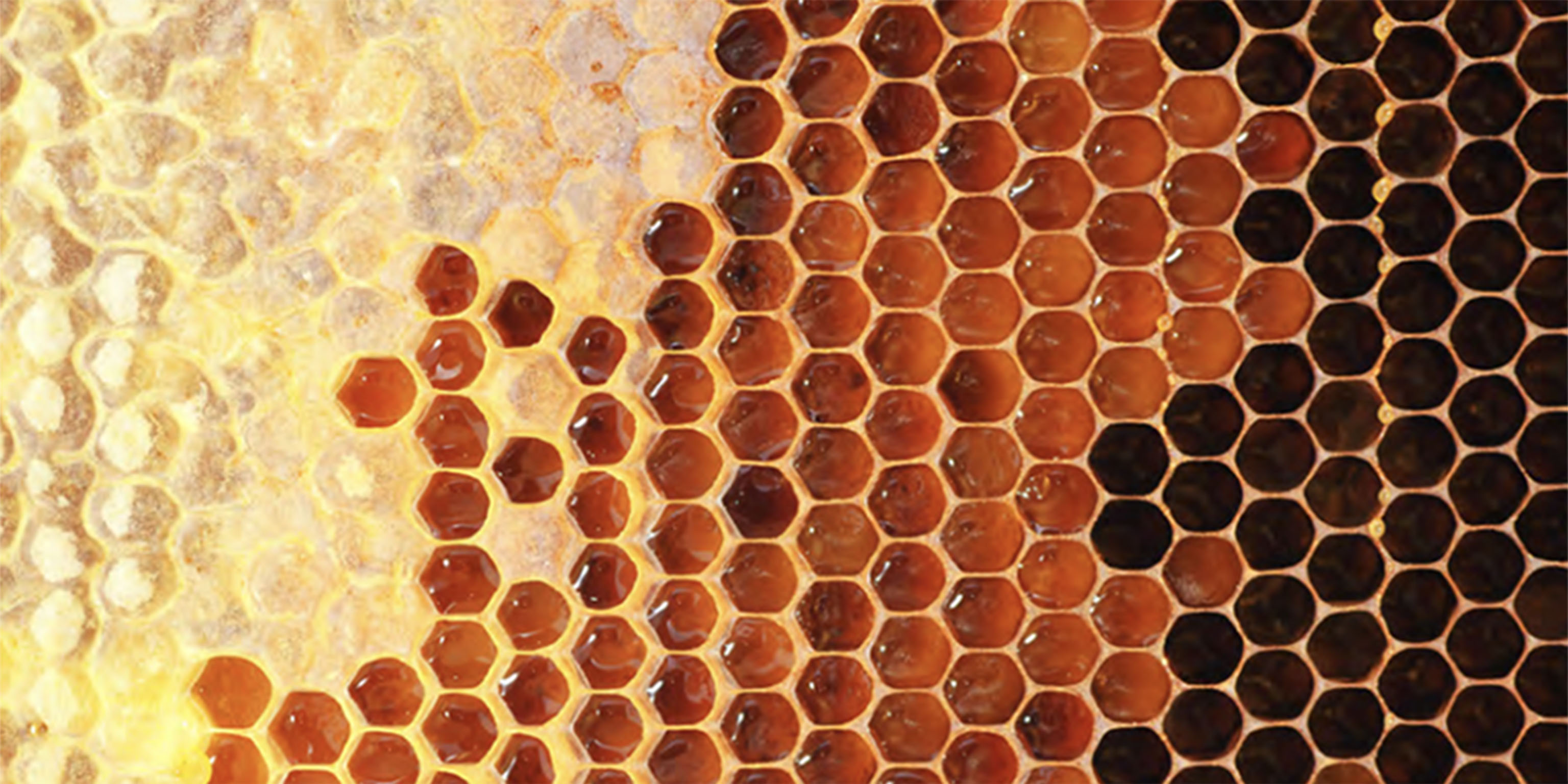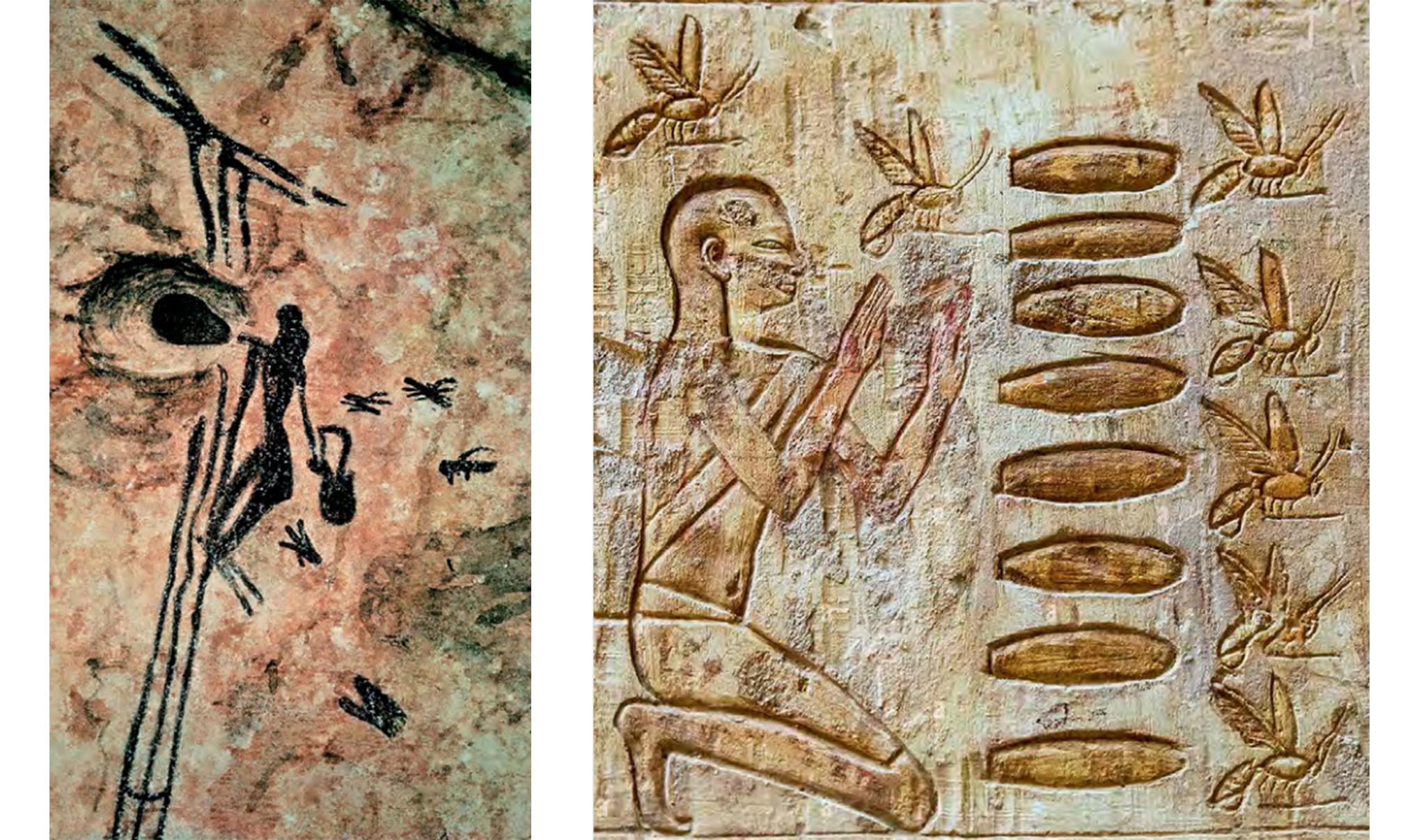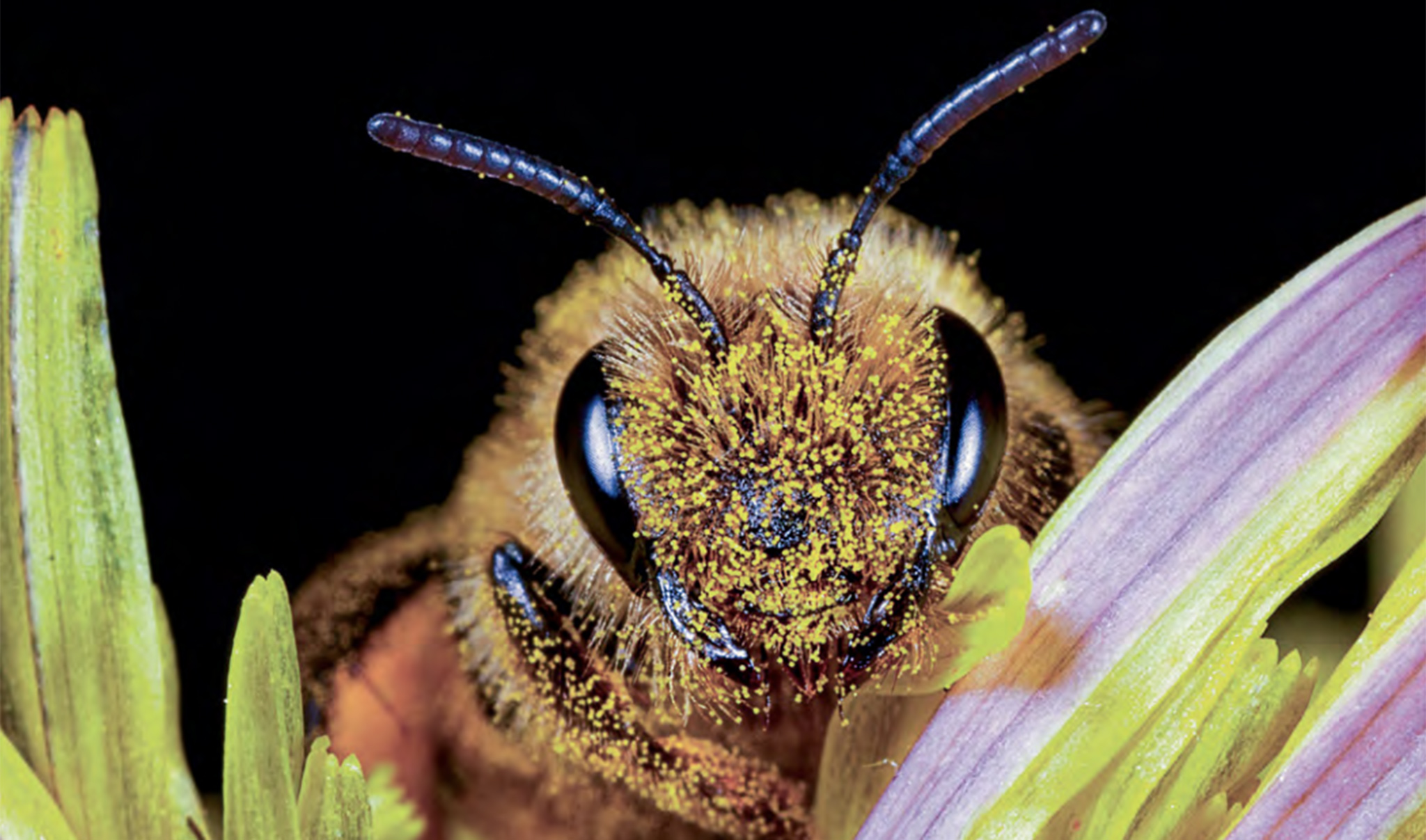


The world’s oldest dessert, a mystical treasure hidden on the dusty shelves of history...
Symbolically, honey; It represents sweet life, prosperity, and even immortality in some cultures. The word itself comes from the ancient Hebrew word meaning to enchant. Although honey bees appeared on earth about 20 million years ago, humanity’s experience with honey began 7000 years ago, in the Stone Age, when they collected and ate honey (if we refer to the cave paintings in Valencia, Spain). When humans and bees came together, a win-win situation of sorts emerged: The bees had a safe place to live (and a reliable food source) – and incredibly impressive amounts of honey and beeswax were harvested.
This golden nectar, which woke up with humanity on the first morning of time, was the immortal food of Egyptian pharaohs in their tombs, the ambrosia of Greek mythology and the favorite of Roman feasts. The story of this unexpected miracle went beyond luxury and divine gifts. The Egyptians cared so much about bees that the title of “Beekeeper” was recorded as one of the leading duties of the kingdom, and honey began to be used not only as a sweet treat but also as a commercial currency, and you will not be surprised; Honey was believed to be a gift from the gods.
In Greek mythology, honey is identified with divine ambrosia and is considered the immortal nectar of Olympus. We also see that in ancient culture, the power of honey seeped into philosophical texts. Ancient Greek doctors and philosophers, especially Hippocrates and Aristotle, wrote about the healing properties of honey. It is considered one of the foundations of modern medicine and is among the first documents describing the health effects of honey.
By the Roman Empire, honey had already become a symbol of luxury and wealth. Honey and bee products were prestigious products frequently used on imperial tables. Beekeeping had become part of Roman craftsmanship and agriculture; This was an indication of how honey played an important economic and cultural role in early history. During this period, bees were generally raised in natural environments, tree holes or artificial “bee houses”. Harvesting honey was seen as a process that respected the natural cycle of bees, and in a sense, it formed the basis of modern sustainable beekeeping.
Naturally, this unique journey of honey has strengthened its place in human history. From ancient times to the present, honey has gone beyond being just a food item and has found a place in many areas of human life such as medicine, art, religion and economy, and of course, it has become an important essence in cosmetics and fragrance production.

However, it is worth mentioning one difference; unlike its old usage, the honey that stands out today is generally a synthetic note; a note that has been carefully dripped onto many fragrances over the last
few decades... Rich, warm, luxurious and comforting, honey works wonderfully to accentuate floral notes or add touches of amber. And thanks to the abundance of gourmet scents, honey lovers can easily find themselves in sweet heaven.
We love what Christine Nagel says about this ingredient: “Honey has two aspects; half devil, half angel. Ambrée has a sweet, relaxing effect that takes you back to your childhood. But a little touch of a feminine structure can be extremely sexy...” Therefore, the richness and depth of honey make it a valuable ingredient in the world of fragrance. One of the most important uses of honey in modern perfumery can be traced back to the launch of Jo Malone’s ‘Nectarine Blossom & Honey’ in the early 2000s. Still one of our favorites...
Based on the trend of adding honey, Guerlain reintroduced honey to its product range with the creation of ‘Aqua Allegoria Flora Nymphea’. With this scent, honey demonstrated its ability to enhance delicate notes, offering a sweet, floral scent that was unmistakably sophisticated. We can present Tom Ford’s ‘Tobacco Vanille’ as another excellent example of how honey can transform a scent. Part of Ford’s Private Blend collection, introduced in 2007, this bold scent uses honey to soften strong notes of tobacco leaf and spices, adding a touch of sweetness that makes the scent irresistibly smooth and rich. In 2011, Hermès launched ‘Eau des Merveilles Au Bal des Étoiles’, a limited edition fragrance that exemplifies the innovative use of honey. This scent elegantly weaves honey into a woody-amber framework, demonstrating how honey’s rich, syrupy quality can enhance and balance the volatile components of a scent, giving it a longer- lasting, more evocative trail.
Then...Honey’s newer and an innovative use of it appeared in Marc Jacobs’s ‘Honey’. Released in 2013, this perfume was paired with pear, tangerine and orange blossom to create a vibrant, energetic scent that captures the lighter side of honey. ‘Le Parfum Royal’, introduced by Elie Saab in 2019, was a magnificent interpretation of the use of honey in fragrance. Here honey served to enhance a bouquet of roses and amber, with an almost velvety layer...
Before going to conclusion, we would like to mention a few technical uses.
In 2011, Hermès launched ‘Eau des Merveilles Au Bal des Étoiles’, a limited edition fragrance that exemplifies the innovative use of honey. This scent elegantly weaved honey into a woody-amber framework, demonstrating how the rich, syrupy quality of honey can enhance and balance the volatile components of a scent, giving it a longer-lasting, more evocative trail.
On the other hand, L’Occitane en Provence, known for its commitment to natural ingredients, launched ‘Miel & Mandarine’ as part of its ambiance collection. The inclusion of honey in this scent highlighted another aspect of innovation: by pairing honey with citrus to create a bright yet rich olfactory experience, proving that honey can transcend traditional sweet, floral pairings to add depth and warmth to fresher, more savory notes.

Looking to the future, significant advances are undoubtedly expected in the use of honey in cosmetics. With the development of sustainable and ethical production methods, products containing honey will become even more popular.
Additionally, thanks to the development of artificial intelligence and biotechnology, new formulations that maximize the benefits of honey can be discovered. This will enable more effective and diverse uses of honey at both the industrial and consumer levels. We encourage you, our readers, to experience the benefits of this natural miracle by experiencing honey-based products.
INTRODUCTION
Gülçiçek Kimya ve Uçanyağlar San. ve Tic. A.Ş. (“GÜLÇİÇEK”), is an organization that adheres to all legal regulations, corporate codes, code of business conduct, and ethical rules. The term "GÜLÇİÇEK" ("we" or "ours/us" or "our") is used in this text to refer to GÜLÇİÇEK and all of its subsidiaries.
GÜLÇİÇEK has a contractual relationship with you as the data controller operating the website you visit. Data belonging to an identified or identifiable real entities are qualified and protected as personal data in accordance with Law on Protection of Personal Data No. 6698 ("LPPD") and the secondary legislation based on it, as well as the decisions of the Personal Data Protection Board ("Board") (hereinafter collectively referred to as "Turkish Data Protection Legislation").
GÜLÇİÇEK is committed to processing, securing, and respecting all personal data relating to real entities, i.e. Individuals, who visit our website or who wish to contact us through our website, in accordance with the Turkish Data Protection Legislation. We present this data privacy statement for your information so that you can understand how we will process individuals' personal data for the purposes of executing agreements and managing customer relations.
LAWFULLY PROCESSING OF YOUR PERSONAL DATA
Personal data of individuals are processed in line with thelegitimate interests (*)of GÜLÇİÇEK because they are directly related to the establishment or performance of the agreement (**) between you and GÜLÇİÇEK due to your use of the website. It is in GÜLÇİÇEK's legitimate interest to manage the performance of the agreement to which GÜLÇİÇEK is a party and to evaluate requests and complaints.
PURPOSE OF PROCESSING PERSONAL DATA
We process personal data for the following purposes:
1) Performance of Customer Satisfaction Activities,
2) Execution of Agreement Processes,
3) Execution of Internal Audit/ Investigation/ Intelligence Activities,
4) Execution/ Supervision of Business Operations,
5) Fulfillment of Legal Notification Obligations.
TYPES OF PERSONAL DATA WE COLLECT
Our Company processes the general personal data of the Individuals consisting of the following personal data types during their visits and applications made on the website www.gulcicek.com.tr for the reasons mentioned above; i) Identity information (Name-Surname), ii) Contact information (Mobile Phone Number, E-mail address), iii) website visit information (IP address, cookies records, permission/consent records, browsing records, log information) and iv) other information that you prefer to provide to us within your message sent to us.
PERSONAL DATA SOURCES
We collect the above-mentioned personal data directly from the Individuals who reach our company by visiting the GÜLÇİÇEK website.
TO WHOM ARE YOUR PERSONAL DATA TRANSFERRED?
In connection with the management of the contractual relationship between us and individuals, we can at any time disclose personal data to a service provider who processes data on our behalf under a service and confidentiality agreement. We do not share the personal data we collect with third parties other than our data processors.
Personal data of individuals are securely processed and stored in local and global data processing systems for financial, contractual, and supplier management purposes, which are used by GÜLÇİÇEK to carry out its operations and transactions effectively.
It is our Company's responsibility to obtain explicit consent from all Individuals whose personal data are processed, in accordance with the Turkish Data Protection Legislation, if necessary, for the processing of their data on GÜLÇİÇEK's domestic data recording systems, and in any case, to inform the Individuals in accordance with the procedures and principles determined under the Communique on Principles and Procedures to be Followed in Fulfillment of the Obligation of Clarification for any data processing activities to be carried out using the GÜLÇİÇEK systems.
HOW LONG WE STORE PERSONAL DATA
We process and retain the personal data of individuals throughout our use of the GÜLÇİÇEK website and as long as the agreement, if any, is in force between you and us. In addition, we continue to store the personal data of individuals for 10 (ten) years after the termination of the agreement between you and GÜLÇİÇEK in accordance with the statute of limitations specified in the Turkish Code of Obligations No. 6098, for our legitimate interests (***). However, within a retention period of 10 (ten) years after the termination of the agreement, we retain personal data in such a way that only certain persons can access it by applying authorization restrictions.
MAINTAINING PERSONAL DATA SECURE
It is our top priority to maintain individuals' personal data secure. Personal data is securely stored either by us or by our carefully selected service providers, who act as data processors under a service and confidentiality agreement. We ensure that strict security measures are in place to keep personal data safe from unauthorized access or disclosure, as well as loss and misuse. We take care that the technical and administrative measures we take in terms of security meet the measures required to be taken in accordance with the Turkish Data Protection Legislation.
DATA PROTECTION RIGHTS OF INDIVIDUALS
Pursuant to Turkish Data Protection Legislation, Individuals may, at any time, apply to GÜLÇİÇEK for any information pertaining to themselves;
a) To learn whether their personal data are processed or not,
b) To demand information as to if their personal data have been processed,
c) To learn the purpose of the processing of their personal data and whether these personal data are used in compliance with the purpose,
d) To know the third parties to whom their personal data are transferred in the country or abroad,
e) To request the rectification of the incomplete or inaccurate data, if any,
f) To request the deletion or destruction of their personal data,
g) To request reporting of the operations carried out pursuant to sub-paragraphs (d) and (e) to third parties to whom their personal data have been transferred,
h) To object to the occurrence of a result against the person himself/herself by analyzing the data processed solely through automated systems,
i) To claim compensation for the damage arising from the unlawful processing of his/her personal data.
EXERCISE OF RIGHTS REGARDING PERSONAL DATA
Each data subject whose data is processed pursuant to the instructions of the data controller GÜLÇİÇEK has the right to apply to the data controller in accordance with Article 13 of the LPPD to exercise his/her rights set forth in Article 11 of the LPPD. GÜLÇİÇEK, the data controller, is obliged to accept or reject this application within 30 (thirty) days at the latest, provided that it explains its reasoning. However, in order for this application to be considered a proper application, it must meet all of the elements regulated in the Communique on the Procedures and Principles of Application to the Data Controller.
For an application made by any data subject to be recognized as a valid application, it must be made:
• in writing in Turkish language by the data subject himself/herself by presenting his/her identity card; or
• through registered electronic mail (REM) address, secure electronic signature, or mobile signature; or
• by using the e-mail address previously notified to GÜLÇİÇEK by the data subject and recorded in GÜLÇİÇEK's system; or
• by means of a software or application developed by GÜLÇİÇEK for the application purposes
Again, in order for an application to be accepted and considered a proper application, it must contain all of the followings:
• Name, surname, and -if the application is in writing- handwritten signature of the data subject.
• Turkish identity number for citizens of the Republic of Türkiye, nationality for foreigners, passport number or identity number, if any,
• Residential or business address for notifications,
• E-mail address, telephone, and fax number for notifications, if any,
• The subject of the request of the data subject.
Therefore, to exercise the rights granted to data subjects under Article 11 of the PDPL, an application bearing the contact and address information in this Policy and containing all of the elements set out in the Communique on the Procedures and Principles of Application to the Data Controller must be submitted to GÜLÇİÇEK using one of the following methods: registered mail with return receipt requested, in person, via an email address registered in GÜLÇİÇEK's systems, or by electronic mail with a secure electronic signature.
IN THE EVENT OF YOUR INQUIRIES
If you are dissatisfied with our data processing ways, wish to make a complaint, or want to receive information or ask a question on any matter you do not understand, you may contact the Data Protection Officer at any time. (E-mail: kvkk@gulcicek.com.tr)
--- --- ---
(*) Regulated as one of the conditions that make it possible to process personal data without the explicit consent of the data subject pursuant to Personal Data Protection Law No. 6698, Article 5, paragraph 2, subparagraph f).
(**) Regulated as one of the conditions that make it possible to process personal data without the explicit consent of the data subject pursuant to Personal Data Protection Law No. 6698, Article 5, paragraph 2, subparagraph c).
(***) Regulated as one of the conditions that make it possible to process personal data without the explicit consent of the data subject pursuant to Personal Data Protection Law No. 6698, Article 5, paragraph 2, subparagraph f).